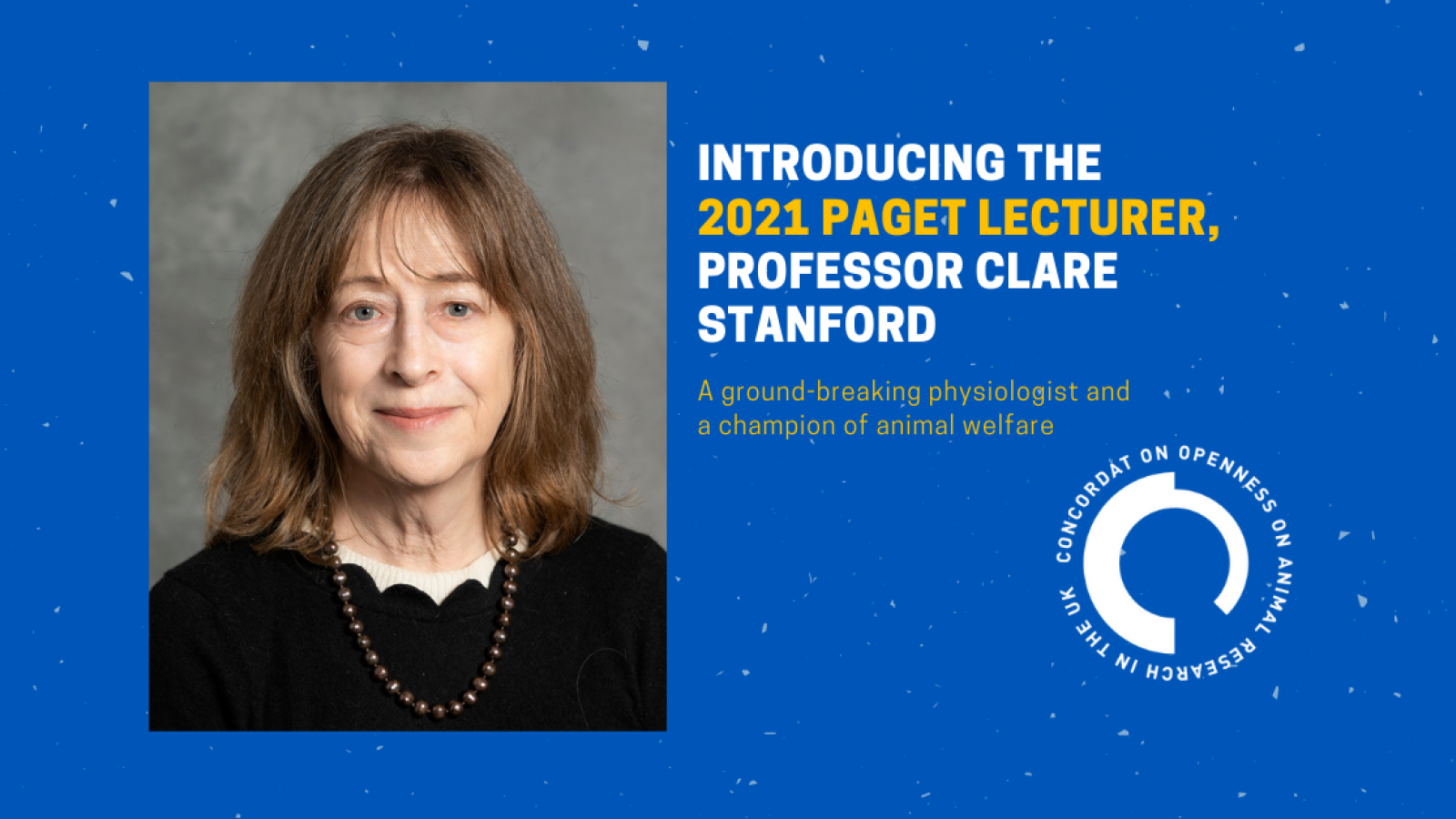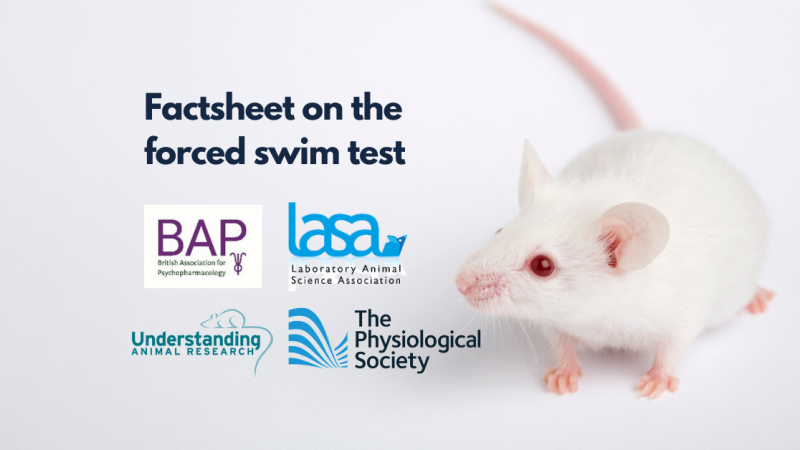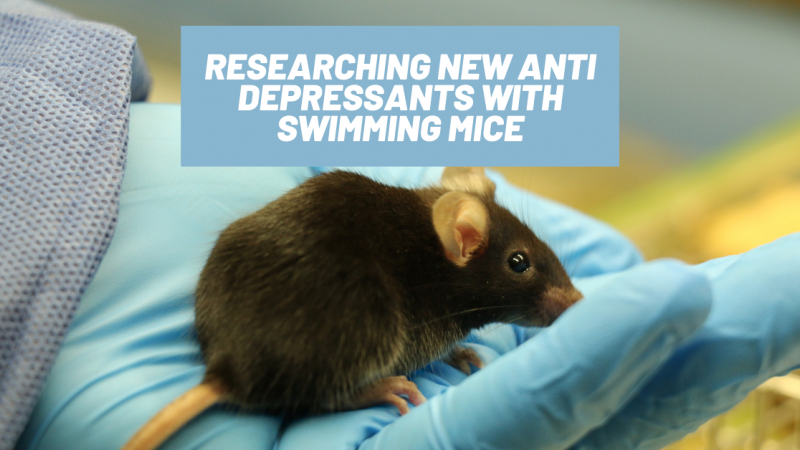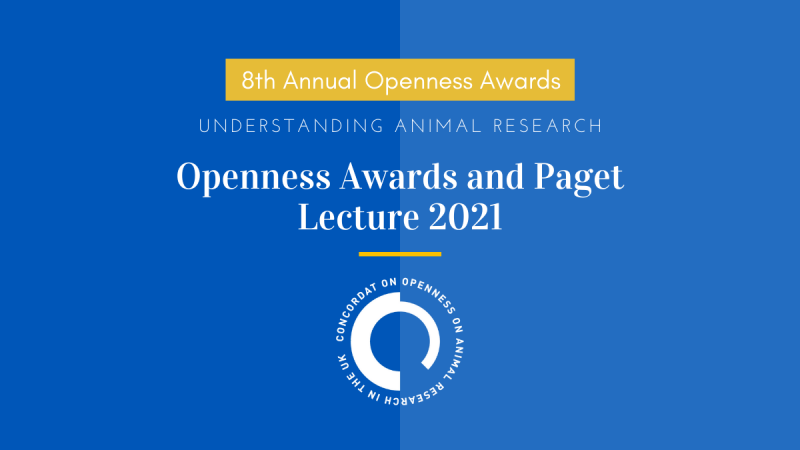Introducing the 2021 Paget lecturer, Professor Clare Stanford
Clare Stanford is a born physicist that became a biologist. Bringing together the best of both worlds, she played a ground-breaking role as a physiologist - the physics of biology – and a pharmacologist. Her discoveries still resonate today as some of the major work regarding animal models for mental disorders. She not only encouraged the use of less extreme experiments and better welfare for the animals but also set standards for animal models of mental disorders.
On Monday 6 December, Clare will present the 84th Stephen Paget Memorial Lecture, "Tortoises, hares and other animals on the pathway to antidepression".
The Paget Lecture is a scientific lecture that commemorates the life of Dr Stephen Paget (1855 - 1926), the founder of the Research Defence Society, a forerunner of Understanding Animal Research, and medical doctor who believed passionately that better science and understanding of physiology would lead to better medical treatments.
For more information about the 2021 Openness Awards and Paget Lecture, including the winners and a summary of Clare's lecture, read our latest article.
Before the lecture, UAR interviewed Clare about her career.
At the very beginning of her career, Clare researched the effect of stress, more specifically the role of noradrenaline. Stress research was very popular at the time, but it mostly involved quite extreme experiments, such as electric shock or hour-long immobilization. “Neither I nor my supervisor was very keen to use those types of stressors,” Clare comments. Instead, they opted to study naturalistic stressors such as putting animals at 4°C for a couple of hours or giving them a short swim – the sort of experiences feral rats experience in the wild.
“This work made us realize that stress intensity matters. It made a very big difference to the neuronal networks recruited in the brain,” Clare explains. Unsurprisingly, the networks involved in responding to mild stress are completely different to those for severe stress. “It's not just the magnitude of the response, it's a different process.”
This work happened just around the same time as a theory that antidepressant drugs were actually mimicking adaptation to stress involving the beta adenoreceptors for noradrenaline. These happened to be the same receptors that Clare was studying. Consequently, she naturally developed an understanding of the role of noradrenaline in antidepressants.
“All the rest of my career really, I found I was much more interested in how the drugs work rather than how the brain responds. So I gradually moved into pharmacology.”
After starting her career at Oxford, Clare moved back to UCL where she had first started off as a physiologist, but this time as a pharmacologist. Collaborating with a long term colleague from Oxford who was working for a pharmaceutical company, she started looking at a drug called Sibutramine. It was about to go into clinical trials as an antidepressant drug, and she wanted to know how Sibutramine affected noradrenaline in the brain.
“Just as my PhD student was about to start writing up her thesis, they came back to me with bad news : Sibutramine wasn’t as promising as imagined as an antidepressant. However, all the patients given this drug lost weight, and the drug was going to be marked as an anti-obesity drug.”
Just like that, Clare found herself studying the role of noradrenaline in obesity.
This work got Clare interested in how amphetamine and psychostimulants, including noradrenaline, affect the brain. A colony of mice arrived from Cambridge, lacking the receptor normally blocked by the drug she had been studying.
“As such the mice were supposed to behave like normal mice that have been given antidepressants. In fact, one of the first things we noticed was that these mice were hyperactive. Because of our background search on amphetamine we decided to give them amphetamine to see what would happen.”
But instead of making the mice run around, the amphetamines were doing the opposite. The mice were curling up in a corner of their cage and chilling out.
“Amphetamine doesn't normally do that. By chance, I knew that amphetamines are used to treat attention deficit hyperactivity disorder. It has a calming effect in those patients. So we looked at the effect of methylphenidate, which is the other drug used to treat ADHD, in the mice. And it has exactly the same effect.”
It turned out that these mice were a much better fit to model ADHD than depression. Clare persuaded a colleague of hers, who was a pioneer in the genetics of psychiatry, to look into this mutated receptor in the mice. He had already found that a mutation in this receptor was linked to alcoholism and ADHD adults have a huge risk of alcohol abuse. About 40% of them end up being alcoholics. Low and behold, he found strong evidence that linked the mutation in question to ADHD patients.
“I think that's the first time, certainly one of the first times, that a discovery in mouse genetics actually predicted a finding in human beings.”
But ADHD patients aren't just hyperactive, they're also impulsive and inattentive. The rest of Clare’s work helped validate this mouse as a model for ADHD. “They turned out to be inattentive and hyperactive and impulsive and excellent models for ADHD.”
Finding models for psychiatric diseases isn’t an easy feat.
“Psychiatric disorders are really collections of different symptoms that come and change with age or even the environment. Putting all those variables into an animal experiment is tough. It is hard to translate their complexity in preclinical research. Often, preclinical scientists just look at one aspect of abnormal behaviour because models do just that, model one feature of the illness.”
“The problem is really best illustrated by ADHD itself. ADHD is really straightforward. There are only three diagnostic criteria : inattention, impulsivity, hyperactivity, and you can measure all three of them. And yet even diagnosing ADHD in rats and mice is amazingly difficult. You can produce evidence, but it can be difficult to be convincing. There are different types of impulsivity. There are different types of inattention. Even with something as straightforward as ADHD, it's a very tough assignment to convince the scientific community, let alone everybody else, that actually this is a pretty good model of the disorder.”
But convince them she did. Her discoveries have and will continue to resonate in the years to come as work on this animal model of ADHD trickles down (translates into treatments for) to help patients. She concluded our interview by quoting Trevor Poole who said “happy animals make for good science”. Or as she would put it:
“Animals that aren’t well or in pain make bad science. They actually produce misleading data. It is sometimes unavoidable to make animals ill in order to study disease but you cannot have unhappy animals in the background when you're trying to understand how healthy animals work.”
Last edited: 31 October 2022 14:02




